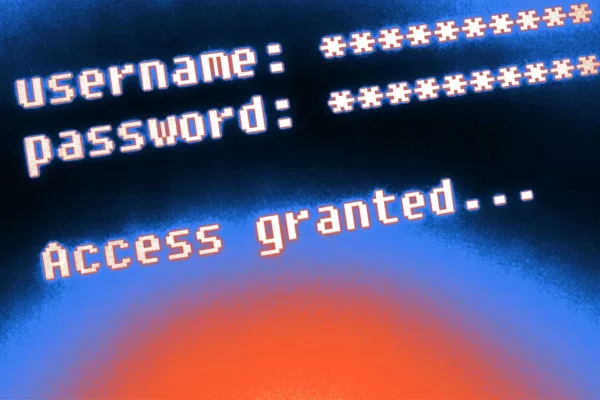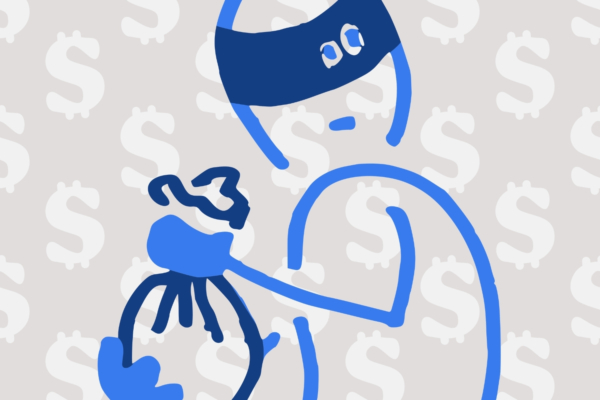
What’s the Difference? Fraudulent vs Disputed Transactions

In 2020, losses from fraudulent credit card transactions in the United States reached a whopping $149 million. The amount lost from fraudulent debit card transactions wasn’t far behind, topping $117 million. On top of the growing numbers of fraud reports, an additional 25 million transactions will be disputed by cardholders every year.
Financial institutions are continually implementing new and different ways to protect their cardholders, but there’s always a chance that one day you will have to deal with a fraudulent or disputed transaction. Though they often get lumped into the same category, fraudulent and disputed transactions are actually two different things. If you find yourself faced with one of these issues, it’ll be important to understand the difference. Here’s what you need to know.
Fee-Free Banking is Here
Looking for a financial institution that doesn’t nickel and dime you? If you live or work in Texas, join Amplify!
What is a fraudulent transaction?
A transaction is considered fraudulent if the transaction was not previously authorized by the cardholder. Examples of a fraudulent transaction include:
- Your credit or debit card was stolen and then used to purchase items, withdraw cash, or otherwise use your card
- Your card information was stolen (though you still may have the physical card) and was used to purchase items, withdraw cash, or otherwise use your card
Note that if you willingly provide a friend or family member with your credit or debit card information, you may not have a valid claim. Even if the purchases themselves were unauthorized, it may not be considered fraud.
Credit and debit card fraud are among the most common types of consumer fraud. Luckily, there are several things you can do to prevent or lessen the blow.
Signs Your Card Has Fraudulent Transactions
Most credit card companies and financial institutions offer fraud protection to their cardholders. These high-tech systems help detect fraud and put a stop to it before too much damage is done. However, you can’t rely 100% on these systems to detect unauthorized purchases.
You can help protect yourself against fraud by reading your bank and credit card statements and checking in with your accounts via online banking apps. Always look for signs that your card could have been fraudulently charged, such as:
- Purchases on your statement that you don’t recognize
- Charges are made from unfamiliar locations
- Phone calls or emails requesting specific information about your card
- Charges or credits to your account in small amounts
If you suspect that your information may have landed in the wrong hands, the first step should be to report it to your bank or credit card company.
How to Report a Fraudulent Transaction
Time is of the essence when reporting fraudulent transactions to your credit card company or bank. Two federal laws dictate consumer liability when it comes to fraud: the Fair Credit Billing Act (credit cards) and the Electronic Funds Transfer Act (debit cards).
Under the Fair Credit Billing Act, the maximum liability for fraudulent credit card transactions is $50. If you report the card stolen before any unauthorized use, your liability is zero.
Debit cards operate a little differently under the Electronic Funds Transfer Act. If you report your card stolen or lost before an authorized transaction, you have no liability. If your card is reported lost or stolen within two days, your maximum liability is $50. After that, your liability increases to $500— provided you report within 60 days. Wait any longer than that, and you may be on the hook for all fraudulent transactions made.
This is why it is so important to always be on the lookout and report unusual purchases as soon as you see them. Your bank or card servicer can cancel your card, issue you a new one, and work to get any money refunded. If a fraudulent transaction is identified at Amplify Credit Union, provisional credit will be granted within 10 business days.
What does it mean to dispute a transaction?
A transaction is considered disputed if it was at one point authorized but that authorization has since been revoked. Examples of this include:
- You were billed for merchandise that you purchased but returned or never received
- You made a purchase but was charged the wrong amount
- You were mistakenly charged twice and haven’t received any credit back
The process for disputing a transaction is different from handling a fraudulent transaction. Here’s what you can do to resolve a dispute.
How to Dispute a Transaction
The exact process for disputing a transaction may vary depending on your bank or credit card company. Learn more about the process by visiting your card issuer’s website or contacting them directly. However, in most cases, the disputed transactions will undergo an investigation. The investigation and refund process can take up to 120 days.
It is recommended that consumers attempt to resolve issues with merchants before filing a dispute with the bank. Oftentimes, the issue will get resolved faster by going directly to the source. If you have no luck by going to the source, the next step is to file a claim.
Claims can usually be filed through your online banking or credit card account. If this is not an option, you can visit your local branch in person (if disputing with a credit union or bank) or mail a letter. The Federal Trade Commission provides fantastic resources, including a sample letter for dispute resolution, on their website. Be prepared to present evidence that supports your position, including sales receipts, invoices, or other materials. Always submit copies instead of originals, and if you send anything by mail, do so by certified mail and request a return receipt.
Take Advantage of Real-Time Notifications
While banks and credit card companies have systems in place to warn you of fraudulent transactions, they’re not fool-proof. Ultimately, it’s in your best interest to make sure you also monitor your accounts.
- You can set up automatic alerts to notify you when a specific action happens, like if your balance goes above a certain amount or if an international charge has occurred.
- If you’d like to keep an even closer eye on your account, you may be able to sign up for real-time notifications every time something is paid for with your card.
Refer to the company who issued your credit or debit card to see your options for notifications. If you use an app to access your accounts, it may be as simple as logging in and changing your notifications. Don’t be afraid to reach out to your card issuer for help—they want your account to be secure too!
Know Your Transaction Types
Knowing the difference between fraudulent and disputed transactions can help you resolve issues quickly should they arise. For quick results, always be on the lookout for charges to your cards that may have been made by mistake or fraudulently. The sooner you discover and report issues, the sooner your credit union or bank can fix the problem and refund your money.
Become an Amplify Member
Every Amplify account holder enjoys fee-free banking. That means no overdraft, maintenance, or other banking fees cutting into your pocket.


